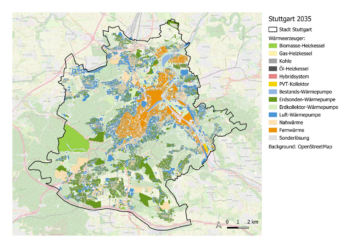Info: What is the Sustainable Finance Disclosure Regulation (SFDR)?
With announcement of the European Green Deal 1 in 2019, the European Commission has introduced a comprehensive program that aims to achieve climate neutrality in the EU by 2050 and to promote sustainable business practices. The European Green Deal provides for an extensive range of measures that penetrate a wide variety of areas of the economy and industry. The concept of “Sustainable Finance” 2 plays an essential role in the European Green Deal. Sustainable Finance means that sustainability factors are considered in the decision-making processes for investments and financing. This is often done using the so-called ESG (environmental, social, governance) criteria.
As part of the European Green Deal and the Sustainable Finance Strategy of the EU, there are several new regulations that are intended to increase transparency concerning the inclusion of sustainability criteria in decision-making processes for investments. The three most important new EU regulations on corporate transparency are the EU Taxonomy, the Corporate Sustainability Reporting Directive (CSRD), and the Sustainable Finance Disclosure Regulation (SFDR), which is tailored primarily to financial companies.
What is the SFDR?
The SFDR 1 2 affects financial product developers and providers as well as financial advisors, such as banks, asset managers, institutional investors, or insurance companies (here collectively referred to as “financial companies”). The SFDR specifies that these financial companies must disclose to clients the extent to which they incorporate sustainability factors into the decision-making process for their financial products and the material adverse sustainability impacts of their financial products. This becomes particularly important for ESG financial products that either advertise ESG characteristics (so-called Article 8 products) or describe themselves as “sustainable investments” (so-called Article 9 products). Here, the SFDR imposes specific requirements on disclosing the sustainability information that is being advertised.
The SFDR is extended by “Delegated Acts”, which in turn build on “Regulatory Technical Standards” of the European Supervisory Authorities (ESA). These determine more precise details on the content and format of the disclosures 3 4. For example, these Delegated Acts define specific mandatory indicators of material adverse sustainability impacts to be reported. These include, for example, greenhouse gas (GHG) emissions (scopes 1 to 3) from investments. The respective financial company must determine and disclose these indicators for its financial products.
How does the SFDR relate to the EU Taxonomy and the CSRD?
EU Taxonomy, CSRD and SFDR form part of a larger EU “Sustainable Finance Framework” that embeds sustainability factors at various economic levels (see Figure 2, own representation based on 1 ).

The EU taxonomy is a standard classification system for the economic area of the EU to determine which activities are considered environmentally sustainable. Based on this classification system, metrics such as the percentage of sales or investments in “environmentally sustainable” activities can be collected and reported. For example, financial companies must report the proportion of their environmentally sustainable investments according to the EU taxonomy for their ESG financial products that fully or partially aim to make a “sustainable investment”.
The CSRD requires companies to publish sustainability information about their business activities. Financial companies covered by the SFDR require sustainability information from the companies in which they invest to comply with SFDR reporting requirements. The CSRD ensures that business companies disclose this information, such as GHG emissions, in their management report, making it available to the financial companies, among others. EU Taxonomy metrics are also part of the CSRD information and are reused by financial companies for their own EU Taxonomy disclosures under the SFDR.
Who is obligated to report what and when?
The SFDR affects so-called financial market participants and financial advisors, i.e., companies that develop and offer financial products referred to as financial companies. The disclosures required to be reported under the SFDR often supplement already existing disclosure obligations of financial companies regarding their financial products.
As shown in Figure 1, there are various content-related requirements at the company and the product level. They mainly concern the description of principal adverse sustainability impacts at the company and the product level and how sustainability factors are incorporated into decision-making processes. In the case of ESG financial products, a distinction can be made between Article 8 financial products, which advertise environmental or social characteristics, and Article 9 financial products, which explicitly have sustainable investment as the objective. The ESG characteristics must be described in more detail in each case. For example, it must be explained how these ESG characteristics are fulfilled, assessed, and monitored.

The SFDR was already adopted in 2019, and its disclosure requirements will be phased in from 2021 to 2023. Most of the disclosures of the SFDR have been reported already since March 30, 2021. These mainly concern the mandatory disclosures on the website or the disclosures in so-called pre-contractual information of financial products. Additional disclosures, such as the ESG characteristics of Article 8 and Article 9-financial products in so-called periodic reports, will become mandatory from January 2022. The disclosure of information on sustainability impacts for other financial products that do not fall under Article 8 or 9 of the SFDR will become mandatory as of December 2022.
The ESA has published two Regulatory Technical Standards (RTS) on the SFDR disclosures in February and October 2021 1 2. These contain, among other things, concrete forms with strict content requirements and structuring specifications. They are currently being discussed by the European Commission and are to be adopted in a Delegated Act, which, according to the current status, will become mandatory as of January 1, 2023 3. The RTS contains, for example, specific sustainability indicators that must be disclosed as part of the information on significant sustainability impacts. Also, the RTS specifies how the EU Taxonomy disclosures are to be included in the SFDR. Figure 3 summarizes the most important dates of the SFDR in a timeline.

What new challenges arise for companies?
The SFDR primarily affects financial companies, which should incorporate sustainability factors into their investment decision-making processes and need to collect corresponding data on the sustainability impacts of their investments. For them, the first challenge is to familiarize themselves with the requirements. Introducing appropriate methods for incorporating sustainability factors into decision-making processes is also a fundamental challenge. A particular challenge for financial companies will be to collect the necessary data. On the one hand, financial companies must familiarize themselves with the methods for collecting sustainability indicators, such as GHG emissions accounting, for their projects. On the other hand, data availability challenges arise, especially for investments in companies. Financial companies are dependent on the companies in which they invest reliably, collecting the relevant data and passing it on to them.
This also poses challenges for companies not operating in the financial sector, as investors will increasingly request the information they need for SFDR. This means that it will become increasingly important for companies to collect and report sustainability data in a structured way to be attractive to investors. Furthermore, mainly if financial companies advertise specific ESG criteria, they will impose requirements in the form of targets or thresholds for the relevant sustainability indicators. The SFDR requirements are thus partly passed on from the financial companies to the companies they invest in.



